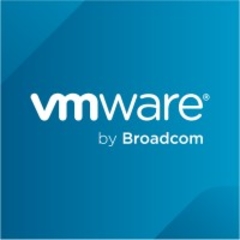The most valuable feature is Salt Cloud due to its ability to tie into VMware, as well as Salt Orchestration, because it allows us to script the process of setting up an entire infrastructure.

The most valuable feature is Salt Cloud due to its ability to tie into VMware, as well as Salt Orchestration, because it allows us to script the process of setting up an entire infrastructure.
This product has saved us time in standing up new servers, as well as allowed us to automate the deployment of these servers and the applications that run on them.
I have used it for 1.5 years.
Occasionally minions would time out and not return a response, although the Salt state would still run. Increasing the timeout helped, but this is more of a design concern than an overall stability issue.
So far no issues with scalability were encountered.
I haven't utilized technical support. The forums seem to be somewhat helpful in suggesting workarounds to issues caused by lack of features, but more detailed steps on implementing those workarounds would be helpful (e.g., setting a static IP on Windows VMs setup with Salt Cloud).
I've used Puppet at a previous job. Salt is the tool that was in place at my current job.
Salt is open source.
The product was already in use.
Define the scope of what you need a configuration management tool to use and then look at all available options and the potential drawbacks of those options. Nothing can beat hiring a sys admin with experience in different technologies.
The two most valuable features to us are beacon related. We can use the beacons to alert that a service is stopped, and restart it almost instantly. Also, we can use the beacons to alert based on whatever monitoring metric we see fit. For example, if a server is running out of usable RAM, for example, we can alert on that, and react to it in whatever way we see fit. We could in fact automate any aspect of scaling – all because of SaltStack. Also, it enables you to have a remote CLI on every server in your infrastructure and issue a command to it. Within seconds, you will have the results of that command in an organized list.
We use it to automatically install software on servers with the minion installed – based on the server name. So we can bring any machine up to spec by simply changing the host name. We have plans to automate it even further; it is just a matter of time.
The online documentation is lackluster at best. It usually only gives one example of how to do something. If you want to see all possibilities, you have to look at the Python code for the SaltStack modules themselves. They are commented extremely well, and what isn't there you can write yourself! Anything is possible when you edit the code on your own. We have modified many modules to suit our specific needs.
I have used it for 10 months.
I have not encountered any stability issues.
I have not encountered any scalability issues. It has helped us scale other applications.
We are all self-taught on this product. I have not initiated a call to their support. I will say their online documentation leaves something to be desired; however, that is all made up in the code itself. It is commented really well.
We were previously using SCCM and SCOM. We have brought in SaltStack and it is slowly taking over those two spaces. SaltStack is a great orchestration tool, but not intended to be used for monitoring. We are looking at switching over to Zenoss for our monitoring solution.
The initial setup was complex because we did not think it would be as simple as it was. I can build a new SaltStack infrastructure in a matter of minutes now, but initially it took me longer than I would like to admit. Again, it is hard to make your way through the documentation. I was using YouTube videos for instruction.
We use the free, open-source version. I have no information or experience with their pricing.
We looked at Ansible, Puppet, and SCCM. All were really good at what they do, but SaltStack seemed to be much more feature rich than the competition. I am extremely happy with our decision.
Absolutely, positively, go to YouTube first before looking at the documentation. Documentation gives you a great start of what you need, then you look at the code to see the configurable options.
The most valuable asset is most probably the ability to target the needed hosts, and running commands via modules or a shell on all of them at the same time. This means that mass parallel administration of large server farms is possible.
I am now able to rollout critical updates within seconds on all affected servers, and it doesn't matter if there are five or 500 of them.
So far, everything worked as expected. This means that so far, I heavn't seen anything which needs improvements. The software works as expected and I stumbled across no issues while using it.

